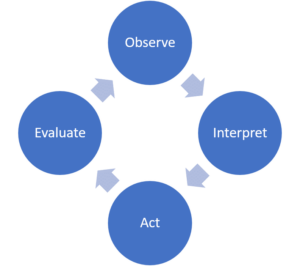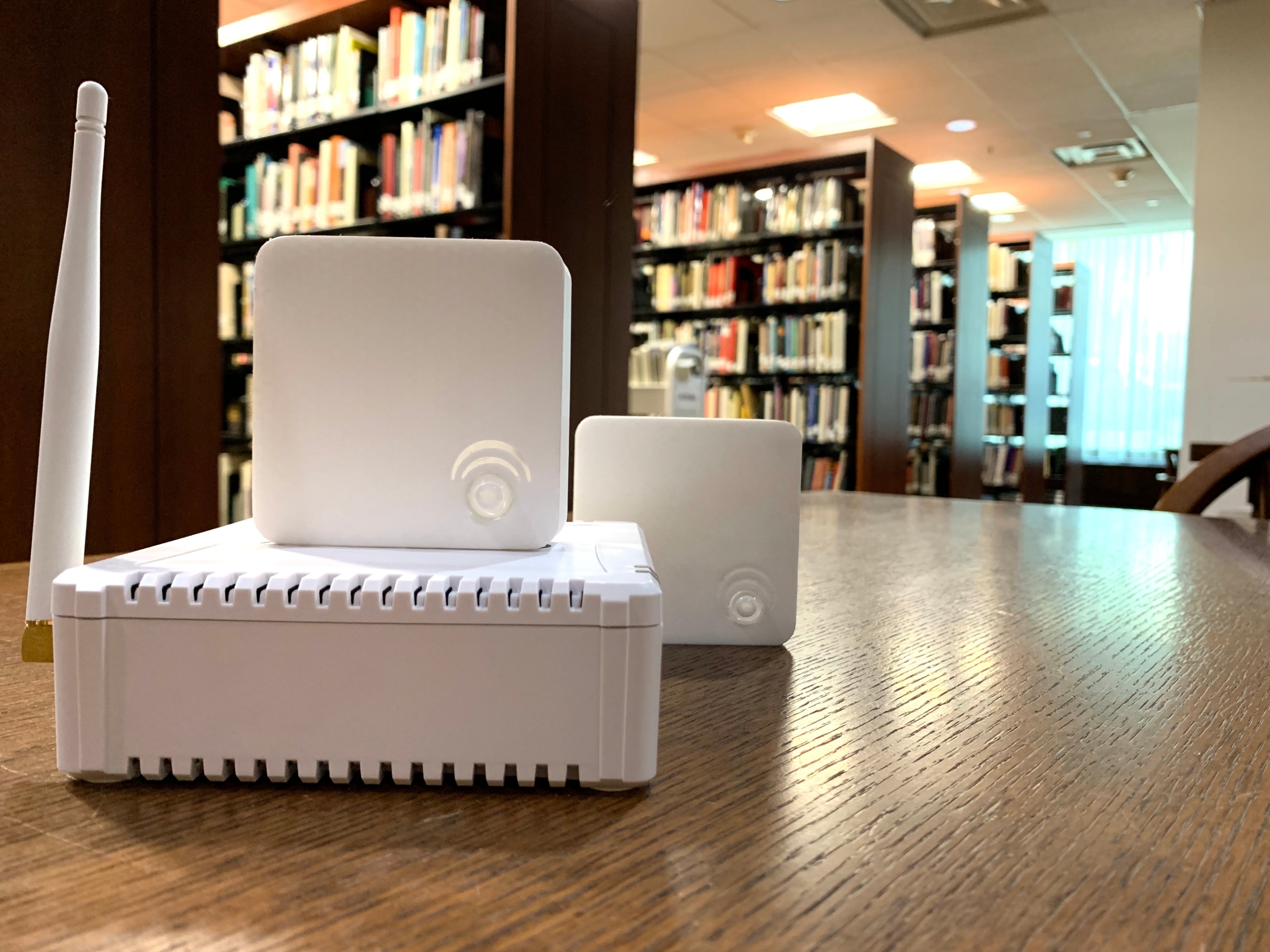Let’s start with something controversial, environmental data collected from dataloggers or sensors is pretty useless by itself. What’s valuable is the ability to interpret the data and take some action to create environments that support the longevity of your collection. That interpretation is handled by the software and by people working together to create a stable environment. Sensors are just the start.
Our Monitoring Framework
So if sensors are just the start, what happens next? After the sensors collect the data?
The purpose of an environmental monitoring framework for collections is to become aware of conditions, understand what they mean, take some action, and understand the effects of the action (and repeat).
So when we say that sensors are just the start, we mean that good observations are just the start. The whole process is Observation, Interpretation, Action, & Evaluation.

Framework for environmental monitoring for collections.
It’s easy to put a quick graphic together like the one above. It’s considerably harder to develop software that empowers collections professionals to easily move through this process. That’s what we’re working on at Conserv.
We’re Starting with Better Observation
Our collections-focused sensor increases an organization’s capacity to observe environmental conditions. The first gap we’re addressing is bringing collection maturity from stale historical data to actionable real-time data and then using that data to make predictions.
|
Collection Maturity
|
No Monitoring
|
Thermostats
(Point-in-Time)
|
Disconnected Dataloggers
(Historical Time)
|
Wireless Sensors
(Real-Time)
|
Predictive Algorithms
(Looking Ahead)
|
Moving from left to right on the table means you have a greater capacity to create stable environmental conditions for the collection.
Interpretation is Gold
The value of environmental monitoring services comes from the ability to make sense of data. What should you focus on? What does it mean? What should you do about it? These questions are the core of any monitoring practice.
While our sensors are disruptive in a good way, we hope that what really catches our customers‘ attention is the way we interpret the data.
Every collection has an implicit or explicit strategy for its collection environment. At Conserv, we will be supporting your efforts to formalize a strategy and evaluate your performance to the strategy. This is why our full-time Conservation Liaisons are conservators with decades of experience in preventive conservation.
If you’re working toward seasonal set points, how well are you following the plan? If you’re working to stay close to a set point or within a specific daily fluctuation, how well are you following the plan? How quickly are you consuming your objects’ light budgets? Will your current conditions allow you to meet your longevity targets for your most sensitive items?
How you interpret your environmental data is highly contextual based on the strategy you have for a particular space and the objects in it. The data really is just the start.
The Idea of a Maturity Model
At Conserv we are working with collections professionals to develop a full maturity model for environmental monitoring along the dimensions of observation, interpretation, action, and evaluation.
The purpose of a maturity model is to assess your organization’s performance along each dimension and determine what can be done, not to reach perfection, but to reach the next level of maturity – it’s a process built around incremental improvement.
When we say that we want to bring better care to more collections, we have the maturity model front of mind. To move 20% of the world’s collections from Level 1 to Level 2 (however we define those levels) is a worthwhile and measurable goal.
Holistic environmental monitoring for collections
Conserv isn’t a sensor company. Conserv is a company that delivers solutions for you to take better care of your collection – better sensors are just the start.
Environmental monitoring is an important part of preventive collections work, and sensors are an important part of environmental monitoring, and all of those strategies and tools are meant to support the larger effort of preserving a shared cultural heritage.
Connect with one of our Conservators to find out how we can help you
If you have any questions about environmental monitoring, integrated pest management, or just want to talk about preventative conservation, please reach out to us! Don’t forget to check out our blog or join our community of collections care professionals where you can discuss hot topics, connect with other conservators or even take a course to get familiar with the Conserv platform.




